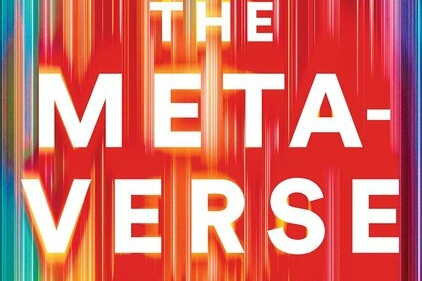In Killer Visual Strategies: Engage Any Audience, Improve Comprehension, and Get Amazing Results Using Visual Communication, visual strategist and founder of Killer Visual Strategies, Amy Balliett examines how visual communication has transformed the ways in which brands connect with their customers and colleagues alike. Amy shared her lessons learned and insights garnered while building her visual communication agency, Killer Visual Strategies.
Visual content can help businesses grow their revenue 49% faster.
Stats on Visual Communication
- Visual information gets to the brain sixty thousand times faster than any other form of communication that exists. 1
-
The average person only reads 20% of a web page with 600+ words. 2
-
90% of product purchase decisions are based on color. 3
-
We have entered a world in which 91 percent of today’s audiences prefer visual content over any other form of content. 4
-
1 Minute of Video is worth 1.8 million words. 5
94% of a brand’s first impressions are based on design.
VISUAL CONTENT IS KING
91% of buyers prefer visual content to any other form of content. As a result of modern platforms in combination with our own fundamental instincts, we are driven to communicate visually more than ever before.
Visual-first mentality
When challenged with the need to communicate, early hunter-gatherers expressed themselves with visual depictions of their message long before the tools for written language became the norm. In other words, visual language first arose as a response to our need to communicate and build connections.
We prefer visual communication
“Brain science suggests that our natural inclination to communicate visually is a dominant human trait. In fact, 30 percent of our cerebral cortex is composed of neurons firing together to drive visual processing, according to Discover.”
When compared with only 8 percent for touch and 3 percent for hearing), this suggests that we prefer visual communication innately.
With visual content, the brain quickly discerns meaning by creating messages, but with text-based content, the brain must string together words to form sentences that then create meaning.
Visual Communication
Visual communication graphically represents information to efficiently and effectively create meaning. When needed, limited text is used to explicate that meaning. In other words, your visual choices must speak louder than your text. Your audience is ready to process your visual information, but not if that content makes little sense without the support of text to elevate it.
Delivering value through your content is just as important as delivering something that’s visually appealing to the viewer.
According to three studies outlined in the journal Behaviour & Information Technology, the average person only takes fifty milliseconds to form an opinion of the content they view. This doesn’t mean that it takes fifty milliseconds to discern meaning from visual content; it only suggests that this is the time required to judge that content.
The average person only reads 20% of a web page with 600+ words
Our brains take far longer to infer meaning from text. The average adult reads 238 words per minute, according to a 2019 meta-analysis. This breaks down to less than 4 words per second. There are very few sentences that—unaccompanied by visual content—drive significant meaning in four words or fewer, so it’s best to assume that it takes at least two seconds for the brain to take in a full sentence. And that doesn’t even consider the length of time needed to process and store the information contained within that sentence.
90% of our capacity for processing nonconscious information is taken up by the visual system
The 8 Rules of Visual Communications
-
RULE 1: ALWAYS THINK ABOUT CON-TEXT (IT’S A CON WHEN THERE’S TOO MUCH TEXT)
-
RULE 2: SMALL VISUAL CUES HAVE A LARGE IMPACT
-
RULE 3: THERE’S NO GOLD AT THE END OF THAT RAINBOW
-
RULE 4: GOOD VISUAL STRATEGISTS ASK “WTF?!
-
Rule 5: Avoid the stigma of stock
-
RULE 6: STAND OUT AT THE COCKTAIL PARTY
-
RULE 7: USE PROPER DATA VIZ THROUGHOUT
Fonts
The fonts you choose will deliver a visual message to the viewer before they even read and understand the words. That’s why the right fonts will set the tone for your content on multiple levels. They can provide personality, bring further context to the information being shared, and impact the trustworthiness of your brand.
When developing visual content with a target audience in mind, follow these directives:
- Build your content around a narrative that appeals to your target audience.
- Choose fonts, colours, and an illustration style that best represent the information and appeal to your target audience.
- Use imagery that speaks to the topic and your target audience equally.
- Follow the rule of subtle visual cues.
- Meet your audience on their preferred channel.
- Design with cultural context in mind.
If you cannot clearly visualize a stat any other way, use typography or tie it to a related icon/illustration.
Pie Chart vs Bar Chart- Percentage
When it comes to a percentage as a data point, it should always be visualized. In fact, this is one of the easiest forms of data to show rather than to represent through typography. When showing a percentage increase or decrease, though, never use a pie chart. Instead, always choose a bar graph that compares the increased or decreased number to the original amount from which the growth or decline stemmed.
Quantagram
A quantagram uses icons (or pictograms) and displays them in a repeated pattern to signal a quantity of something. Quantity + Pictogram = Quantagram.
Quantagrams should be used sparingly, and only when there isn’t an alternative solution to visualize the information. If the number is greater than one hundred and a quantagram is still the only way to visualize it, then use typography to showcase the data point instead.
Learn the rules like a pro, so you can break them like an artist.—Pablo Picasso
Need help with developing a digital strategy for your business? Get in touch.


